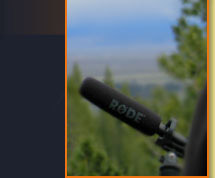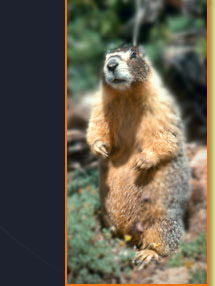If you want a close-up look at what's happening to the forests of the Sierra Nevada and western United States, check out the work of San Francisco photographer Grant Johnson at the links below.
An artist who works with a camera, Johnson has traveled widely across the region and captured a forest landscape in crisis - one increasingly besieged by insect infestations, climate change and high severity wildfire.
Johnson's photos dovetail nicely with recent scientific studies that document the problem in excruciating detail. Like many, he is worried about the future of this landscape. Will today's fire and beetle-damaged woodlands bounce back as conifer forests or give way - in an era of climate change - to more deciduous-dominated stands or even morph into vast scrublands of brush and grass?
No-one knows. But Johnson is out there in the field, watching and taking pictures. After my recent article about the destructive Moonlight fire in Plumas County, he sent me the following e-mail message: "I travel the West documenting the environment and I can say, from personal observation, that virtually all of the western forests are under siege by parasitic organisms which are devastating much of the common native flora. Then, of course, they burn. This is not your fathers America anymore. It's a brave new world of very uncertain destiny but one thing is for sure...it will be a lot easier to see what forest is left for the lack of trees obscuring the view."
I was struck by Johnson's photos and my guess is that you will be, too. To see his work in detail, and learn more about Johnson himself, visit the following web-site:
http://www.grantjohnson.net/
For a direct link to his "Forests of the Future" photos, click on the link under the picture to the left.
http://www.grantjohnson.net/gallery.php?gallery_id=16
Forests, as Johnson writes on his web-page, are important climate change buffers. "Trees sequester carbon and emit oxygen. As forests are burned or logged, the trees are removed from service and those greenhouse gases, added to the already critical load, cause the planet to warm. The warmer drier climate that we, in the West, have recently experienced is causing a very large net loss of forest in this part of the country alone. This change from woodland to grassland is altering the ecology significantly and indeterminately."
(All photos courtesy of Grant Johnson)
Read Full Article
An artist who works with a camera, Johnson has traveled widely across the region and captured a forest landscape in crisis - one increasingly besieged by insect infestations, climate change and high severity wildfire.
Johnson's photos dovetail nicely with recent scientific studies that document the problem in excruciating detail. Like many, he is worried about the future of this landscape. Will today's fire and beetle-damaged woodlands bounce back as conifer forests or give way - in an era of climate change - to more deciduous-dominated stands or even morph into vast scrublands of brush and grass?
No-one knows. But Johnson is out there in the field, watching and taking pictures. After my recent article about the destructive Moonlight fire in Plumas County, he sent me the following e-mail message: "I travel the West documenting the environment and I can say, from personal observation, that virtually all of the western forests are under siege by parasitic organisms which are devastating much of the common native flora. Then, of course, they burn. This is not your fathers America anymore. It's a brave new world of very uncertain destiny but one thing is for sure...it will be a lot easier to see what forest is left for the lack of trees obscuring the view."
I was struck by Johnson's photos and my guess is that you will be, too. To see his work in detail, and learn more about Johnson himself, visit the following web-site:
http://www.grantjohnson.net/
For a direct link to his "Forests of the Future" photos, click on the link under the picture to the left.
http://www.grantjohnson.net/gallery.php?gallery_id=16
Forests, as Johnson writes on his web-page, are important climate change buffers. "Trees sequester carbon and emit oxygen. As forests are burned or logged, the trees are removed from service and those greenhouse gases, added to the already critical load, cause the planet to warm. The warmer drier climate that we, in the West, have recently experienced is causing a very large net loss of forest in this part of the country alone. This change from woodland to grassland is altering the ecology significantly and indeterminately."
(All photos courtesy of Grant Johnson)
Read Full Article
















